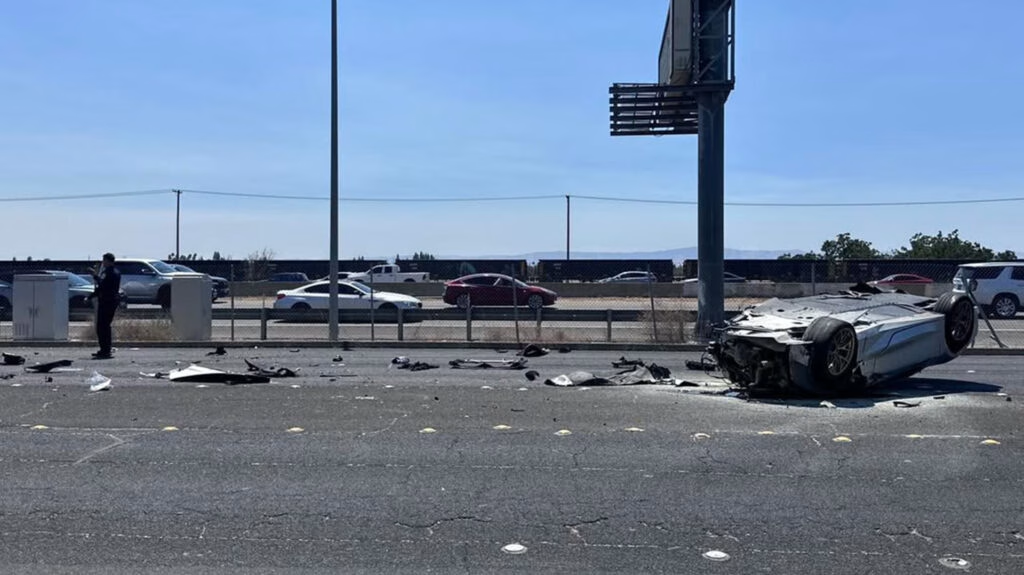Why Do People Still Street Race Despite the Risks?
It’s a question that stumps a lot of folks, especially after hearing stories like the recent Corvette and Mustang crash in California. The thrill of speed, the adrenaline rush, and the urge to show off—these are powerful motivators. But when you peel back the layers, it’s often about more than just going fast. For some, it’s a sense of belonging, a way to prove themselves, or even just a misguided attempt to escape the monotony of daily life. Yet, as this latest incident on SR-99 near Modesto shows, the consequences can be devastating and permanent.
What Actually Happened in the Modesto Street Racing Crash?
On a stretch of highway just north of Standiford Avenue, two drivers—one in a Corvette, the other in a Mustang—decided to race. Things went sideways fast. The Corvette lost control, flipped several times, and came to rest on Sisk Road. The driver, 26-year-old Tyler K. Azadzoi, was ejected and suffered major injuries. His passenger, Ayesha Malik, was luckier, escaping with minor injuries. The Mustang’s driver, Raul Torres Jr., stopped briefly before heading home, only to be tracked down by police later. The aftermath? One totaled Corvette, one seized Mustang, and two lives forever changed.
How Are Authorities Responding to Street Racing in California?
Law enforcement isn’t just sitting on the sidelines anymore. The California Highway Patrol (CHP) and local agencies have ramped up patrols and are using everything from aerial surveillance to license plate readers. In this case, the Mustang was seized, and while charges haven’t been officially announced, the writing’s on the wall: penalties are getting harsher. For context, a recent case saw a Porsche driver fined $2,700 for hitting 100 mph. When street racing is involved, expect even stiffer consequences—think hefty fines, license suspension, and even jail time.
What Legal Consequences Can Street Racers Face?
If you’re caught street racing in California, the law doesn’t pull any punches. Under California Vehicle Code Section 23109, participating in a speed contest can result in jail time, fines up to $1,000 for a first offense, and immediate vehicle impoundment for up to 30 days. Repeat offenders face even tougher penalties, including possible felony charges if someone is injured. And if you flee the scene, as in this case, you’re looking at additional charges for hit-and-run. Insurance rates? Through the roof—if you can even get coverage again.
Why Is Street Racing Still So Common in the Central Valley?
The Central Valley, with its long, straight highways and relatively light late-night traffic, has become a hotspot for illegal racing. According to the National Highway Traffic Safety Administration (NHTSA), California consistently ranks among the top states for street racing-related fatalities. In 2022 alone, more than 150 deaths nationwide were linked directly to illegal street racing, with a significant portion occurring in California’s rural and suburban corridors. Local law enforcement has responded with increased checkpoints and community outreach, but the problem persists—often fueled by social media and viral videos.
What Can Be Done to Curb Illegal Street Racing?
There’s no silver bullet, but a multi-pronged approach seems to work best. Law enforcement crackdowns are part of the equation, but so is education. Programs that bring real crash survivors into schools have been shown to reduce risky driving behaviors among teens. Some cities have even created legal drag strips or sanctioned racing events, giving enthusiasts a safer outlet. Community involvement matters, too—neighbors reporting gatherings or suspicious activity can help police intervene before tragedy strikes.
Are There Safer Alternatives for Car Enthusiasts?
Absolutely. Legal track days, autocross events, and sanctioned drag races offer all the excitement of racing without the life-or-death stakes. Organizations like the Sports Car Club of America (SCCA) and National Auto Sport Association (NASA) host events across California, welcoming everyone from beginners to seasoned pros. Not only do these venues provide a controlled environment, but they also foster a sense of camaraderie and respect for the sport. The result? Pure magic. You get the thrill, minus the risk of wrecking your life—or someone else’s.
What’s the Real Cost of Street Racing Accidents?
Beyond the obvious legal and financial fallout, the emotional toll is immense. Survivors often deal with lifelong injuries, PTSD, and the guilt of having harmed others. Families are left to pick up the pieces, sometimes after losing loved ones. And the community pays, too—emergency services, increased insurance premiums, and the ripple effect of trauma. It’s a price tag that never shows up on a speeding ticket.
The big takeaway? Street racing isn’t about proving who’s fastest—it’s about making smarter choices. Swap the street for the track, and you’ll still get your adrenaline fix, without gambling everything. Start with one change this week, and you’ll likely spot the difference by month’s end.

